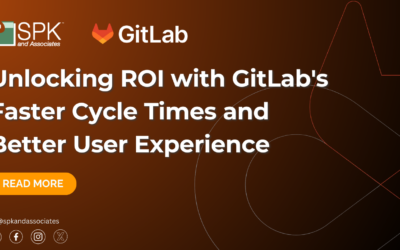Continuous Integration (CI) is a critical piece of any company’s software development practices, and usually the first effort on the road to DevOps. Within optimal continuous integration practices, engineers submit and test new developments against the main body of work. The main goal centers quick feedback on incremental program changes from many contributors. Though there are many benefits, some of the critical benefits include lower maintenance costs and higher levels of code stability. Further, your engineers can build a rapid, steady base of communication on a collaborative code.
Moreover, rapid feedback minimizes costly errors. This occurs when code submissions trigger an automated build and test cycle, during which the tests detect errors and notify all relevant parties. As such, teams need multiple answers at once. First, do the new changes work when checked against the mainline? Second, do these changes also work with edits that other team members submitted concurrently? These tests — and their subsequent answers — keep the mainline codebase stable. It also reinforces the concept of working software being the measure of progress.
There are approximately ten key continuous integration practices, or principles, as outlined below:
Ten Key Continuous Integration Practices
- Maintain a code repository
- Automate the build
- Ensure build is self-testing
- All members commit to the same baseline
- Every commit (to baseline) should be built
- Quick builds
- Test in a clone of the production environment
- Ease of access to latest deliverables
- Shareable and accessible results of the latest build
- Automated deployment
Though all of these principles are necessary, each also comes with complex bundling and tool packages. Thus, we will begin by looking at the first three of the principles.
1) Maintain a code repository
Having a version control system (VCS) to maintain your code history is a necessary facet of continuous integration. At this point, the issue is not simply having a repository, but rather, the repository access and maintenance. As an ideology, CI holds some pretty strong opinions about this matter! According to CI, a single, central repository must reside. All checkouts and testing occurs from this repository, and all commits push from it. As such, this maintains one single source of truth at all times. Plus, it avoids a costly disconnect between change in the development environment and the production.
2) Automate the Build
In a CI system, builds should happen automatically when a developer submits their code. Ideally, the build should be completely free of manual steps! Not only is automation important for the speed of the build process (arguably the core reason for continuous integration), but it also imposes a standard of consistency. After all, repeatability is vitally important for ensuring quality and tracking progress.
3) Ensure the Build is Self-Testing
When a build requires manual testing, it becomes tedious and tiring. Therefore, the chances of sneaky errors will also increase. Though CI ideally runs all tests with every build, the reality of that wish is frequently impractical. More often, it is necessary to break down testing into three phases. First, run the tests pertinent to the affected modules. Then, aggregate a set of changes. Finally, engineers can run that aggregate set through the full complement of testing. Fewer tests leads to a faster test execution time — and quicker feedback to the developer! This also speeds up submission of batches and conserves organizational resources.
Continuous Integration Tools
Amidst these first core continuous integration practices or principles, it’s also necessary to consider the best possible tools for your company’s needs. This relies on a variety of factors, including but not limited to: your preferred Version Control System (VCS), your containerization tools, and potential third-party add-ons.
Some of the more popular CI/CD tools include CircleCI, Azure Pipelines, and Atlassian Bamboo. These tools vary in version control system (VCS), cloud vs. on-premises usability, third-party platform support, and cloud usage.
Given the increasing necessity of remote and at-home work, a main aspect for consideration is cloud vs. on-premises infrastructure. For instance, some companies prefer on-premises continuous integration tools, while others operate solely within a cloud infrastructure. The cloud vs. on-prem question relies on your security, scalability, and accessibility needs. In fact, companies can also create a hybrid solution that allows for on-site CI tools as well as cloud management.
With 20+ years as a managed service provider, our SPKAA team of experts understands the complexities of working with hybrid solutions. We can manage your CI/CD tools — and also ensure that we educate in the process! If you’re looking to upgrade your CI tools or revamp your CI process to incorporate some of these continuous integration practices, contact us for a free consultation.
Next Steps:
- Contact SPK and Associates to learn more about our continuous integration and continuous delivery services, and flexible solutions for your company’s needs.
- Read our White Papers & Case Studies for examples of how SPK leverages technology to advance engineering and business for our clients
- Subscribe to our blog to read further about smart engineering technology solutions and development operations topics.






